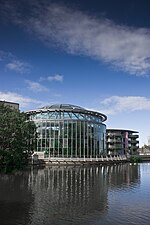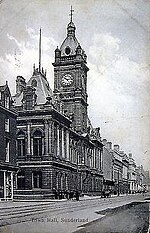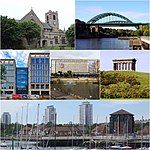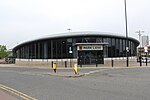Wearside
City of SunderlandEngland stubsGeography of County DurhamGeography of Tyne and WearTyne and Wear geography stubs ... and 2 more
Urban areas of EnglandUse British English from March 2020

Wearside () is a built-up area in County Durham and Tyne and Wear, England. It is named after the River Wear which flows through it and traditionally all in the County of Durham. In the 2011 census, its official name was the Sunderland Built-up area since Sunderland is its largest part, the urban area extends to the surrounding City of Sunderland district, small parts of County Durham district and a small part of the Metropolitan Borough of Gateshead. Notable towns in the urban area include Birtley, Chester le Street, Hetton le Hole, Houghton le Spring and Washington.
Excerpt from the Wikipedia article Wearside (License: CC BY-SA 3.0, Authors, Images).Wearside
Burdon Road, Sunderland Ashbrooke
Geographical coordinates (GPS) Address Nearby Places Show on map
Geographical coordinates (GPS)
| Latitude | Longitude |
|---|---|
| N 54.903888888889 ° | E -1.3811111111111 ° |
Address
BURDON ROAD-BOROUGH ROAD-S/B
Burdon Road
SR1 1QB Sunderland, Ashbrooke
England, United Kingdom
Open on Google Maps










